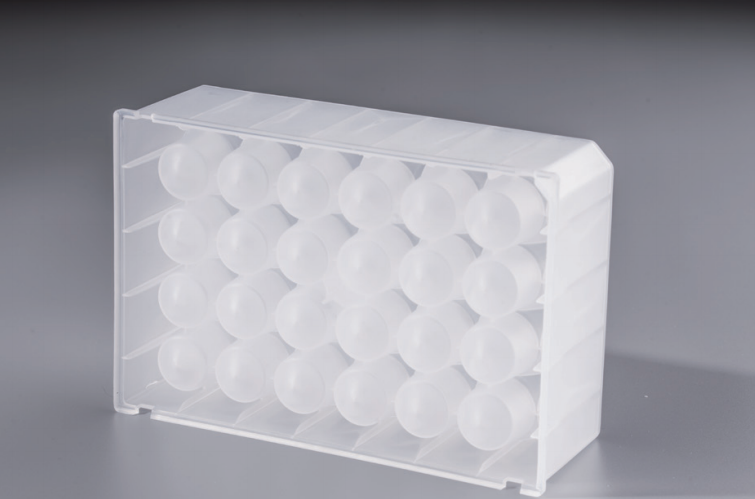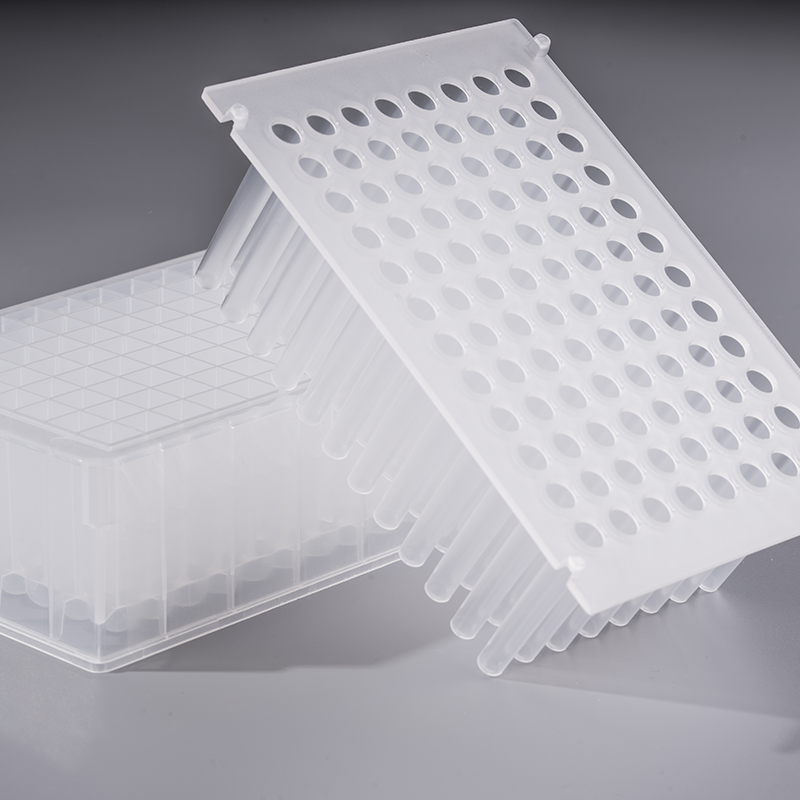1. Introduction to Deep Well Plate The Deep Well Plate, also known as a microplate or microtiter plate, is a rectangular plastic or glass plate with multiple wells. These wells are arranged in a grid pattern, typically in a 8x12 or 16x24 format, allowing for the simultaneous processing of multiple samples. The wells have a conical or cylindrical shape, providing a larger volume capacity compared to standard microplates. Deep Well Plates are commonly used in molecular biology, genomics, drug discovery, and other research areas that require high-throughput screening and sample preparation.
2. Design and Construction Deep Well Plates are typically made of high-quality polypropylene or glass, ensuring chemical resistance and compatibility with various laboratory processes. The plates are designed to withstand extreme temperatures, making them suitable for both heating and cooling applications. The wells are precisely molded to ensure uniformity and accuracy in sample volume measurements. The plate's rigid structure prevents warping or deformation during handling and storage, ensuring reliable and consistent results.
3. Applications in Molecular Biology Deep Well Plates are extensively used in molecular biology research, particularly in DNA and RNA extraction, purification, and amplification processes. The large well volume allows for efficient sample mixing and reaction, reducing the risk of cross-contamination. Deep Well Plates are compatible with automated liquid handling systems, enabling high-throughput processing of samples. They are also used in various molecular biology techniques such as PCR, qPCR, and ELISA, facilitating the analysis of gene expression, protein quantification, and biomarker detection.
4. High-Throughput Screening in Drug Discovery Deep Well Plates are indispensable in the field of drug discovery, where large-scale screening of compounds is required. The high-throughput capabilities of Deep Well Plates enable researchers to test thousands of compounds simultaneously, accelerating the drug discovery process. These plates are used in assays to identify potential drug candidates, evaluate their efficacy, and assess their toxicity. The large well volume allows for the addition of multiple reagents and compounds, enabling efficient screening and analysis.
5. Sample Storage and Preservation Deep Well Plates are also utilized for sample storage and preservation. The wells provide a secure and organized environment for storing biological samples, chemicals, and reagents. The plates can be sealed with adhesive films or caps to prevent evaporation and contamination, ensuring the long-term stability of the stored samples. Deep Well Plates are commonly used in biobanks, research institutes, and pharmaceutical companies for the storage of valuable samples, facilitating easy retrieval and minimizing sample degradation.
6. Advantages of Deep Well Plates Deep Well Plates offer several advantages over traditional laboratory equipment. Firstly, their high-throughput capabilities significantly increase the efficiency of experiments, saving time and resources. The large well volume allows for the reduction of sample and reagent volumes, minimizing costs. The uniform well design ensures consistent results across all wells, eliminating experimental variations. Additionally, the compatibility with automated systems simplifies workflow and reduces manual labor, enhancing productivity.
7. Considerations for Deep Well Plate Selection When selecting a Deep Well Plate, researchers should consider several factors. The material of the plate should be compatible with the specific application and the chemicals or reagents used. Polypropylene plates are suitable for most applications, while glass plates are preferred for certain high-temperature processes. The well volume and shape should be chosen based on the sample volume and the required mixing efficiency. Researchers should also consider the plate's compatibility with automated systems and the availability of sealing options for sample storage.
8. Future Developments and Innovations The field of Deep Well Plates continues to evolve, with ongoing developments and innovations. Manufacturers are constantly improving the design and functionality of Deep Well Plates to meet the evolving needs of researchers. This includes the development of specialized plates for specific applications, such as magnetic bead-based assays or high-temperature reactions. Furthermore, advancements in material science and manufacturing techniques may lead to the development of more durable and chemically resistant plates, further enhancing their performance and reliability.
In conclusion, Deep Well Plates are indispensable tools in scientific research and analysis. Their design, construction, and versatility make them suitable for a wide range of applications in molecular biology, drug discovery, and sample storage. The high-throughput capabilities and numerous advantages of Deep Well Plates contribute to the efficiency and accuracy of experiments. As technology advances, we can expect further innovations in Deep Well Plate design, enabling researchers to push the boundaries of scientific discovery.
Related Products



